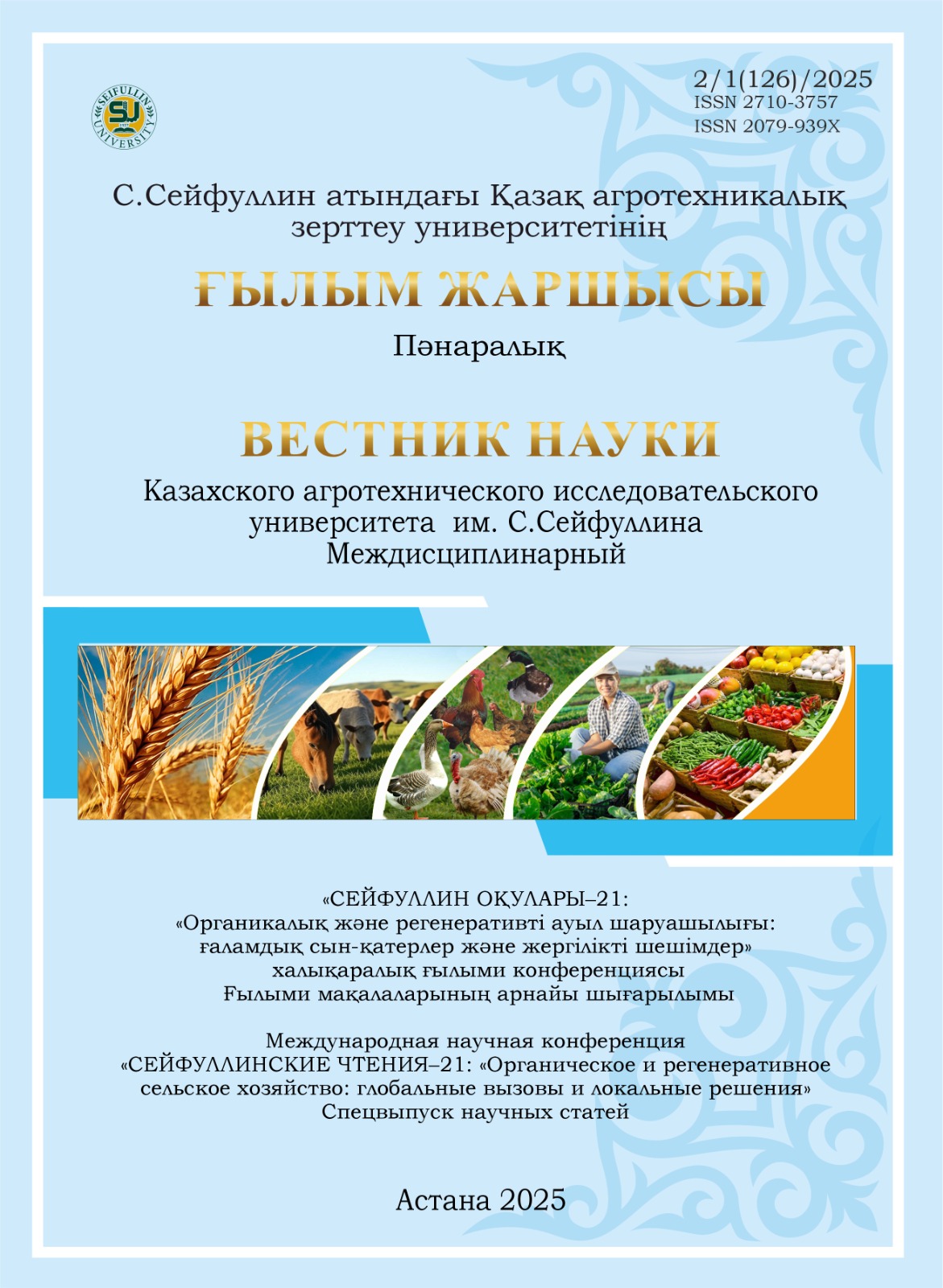Potential productivity of stable hybrid wheat varieties on organic cropping areas
DOI:
https://doi.org/10.51452/kazatu.2025.2/1(126).1946Keywords:
crossbreeding with wild relatives; synthetic genotypes of varieties; samples.Abstract
Background and Aim. Organic agriculture is currently one of the main directions for producing environmentally friendly products. In this regard, increasing the productivity of wheat crops in organic fields is an important issue. Synthetic interspecific hybrids obtained by crossing wheat with its wild relatives may exhibit higher productivity and disease resistance under organic conditions. The main goal of this study is to determine the potential productivity of interspecific hybrid lines in organic fields.
Materials and Methods. The research was conducted on the organic field plots of the Kazakh Research Institute of Agriculture and Plant Growing. The objects of study included cultivated wheat (Triticum aestivum) and synthetic hybrids obtained by crossing it with its wild relatives (Aegilops cylindrica, Aegilops triaristata, Triticum timopheevii, T. militinae, T. kiharae). The hybrid lines were sown with different row spacing, and their vegetation period, disease resistance, yield components, and grain technological quality (protein, gluten, and starch content) were studied. The results were analyzed using statistical methods by B.A. Dospekhov. Results. The plants of the synthetic hybrid lines demonstrated a high level of resistance during the vegetation period and showed stable resistance to diseases. In addition, the grain quality of the hybrids was characterized by high indicators, allowing them to be used as effective initial material for further breeding. The collected data confirmed that the new hybrid lines consistently produce stable yields under organic farming conditions.
Conclusion. The use of interspecific wheat hybrids in organic fields opens the way to producing environmentally friendly and sustainable products in agriculture. The obtained synthetic hybrids possess high productivity and disease resistance, proving their effectiveness for further use in breeding programs. This study provides a basis for improving wheat breeding in organic agriculture and developing new, high-quality varieties.

